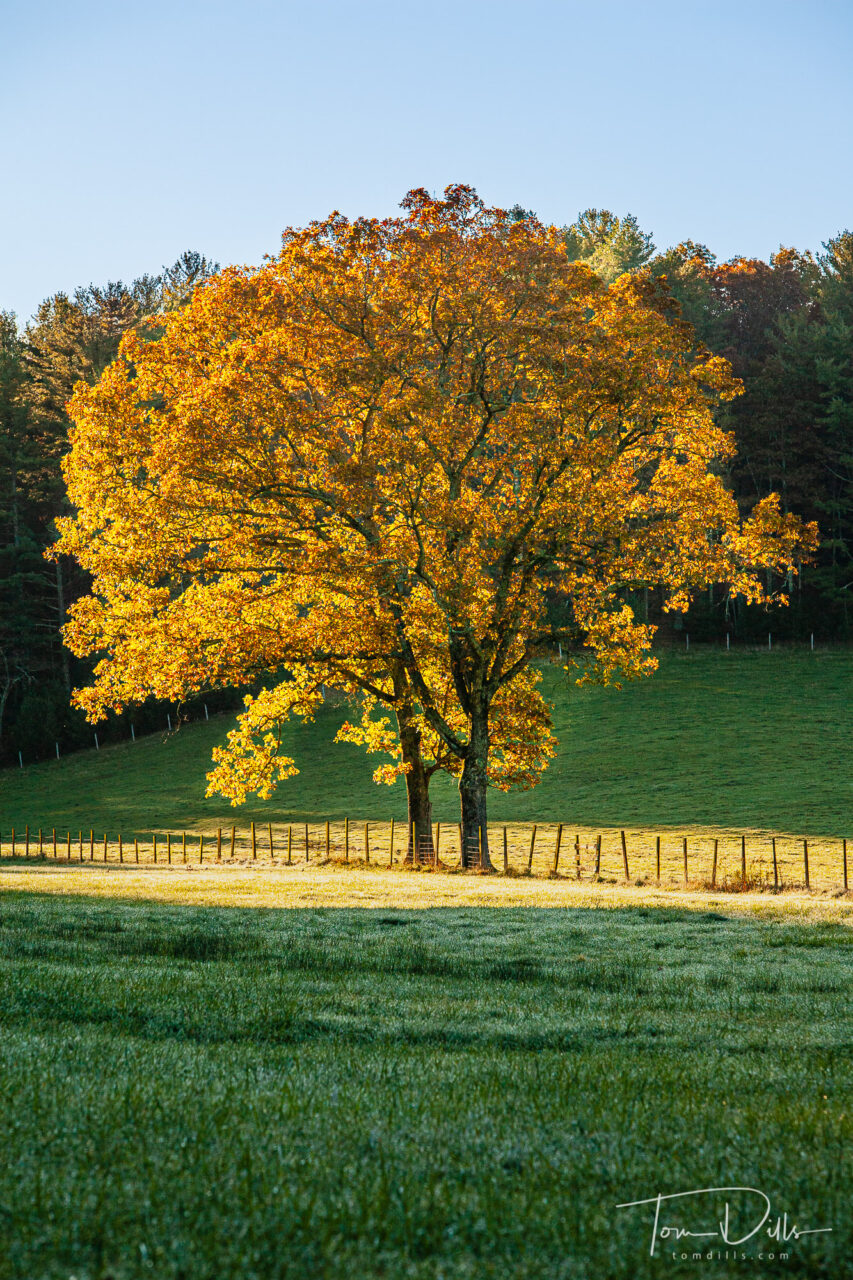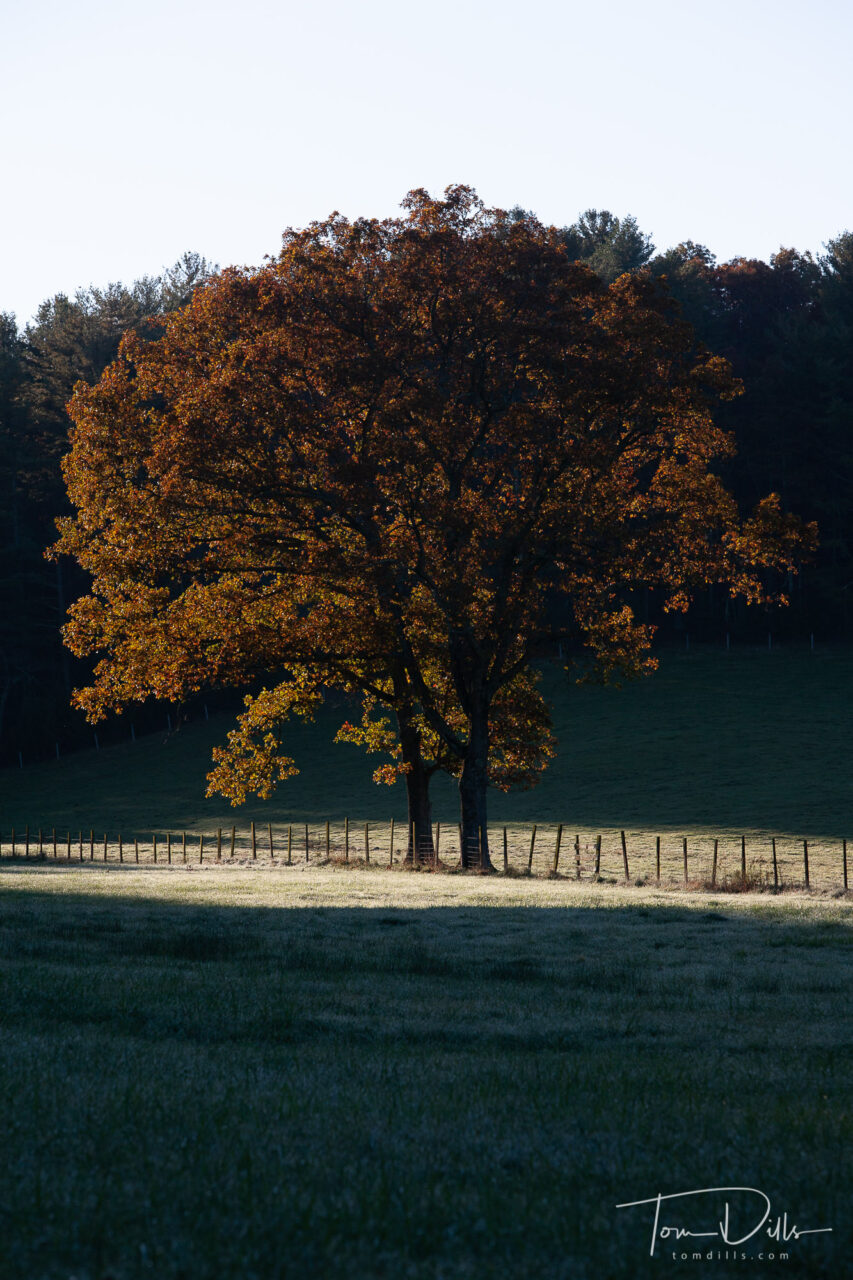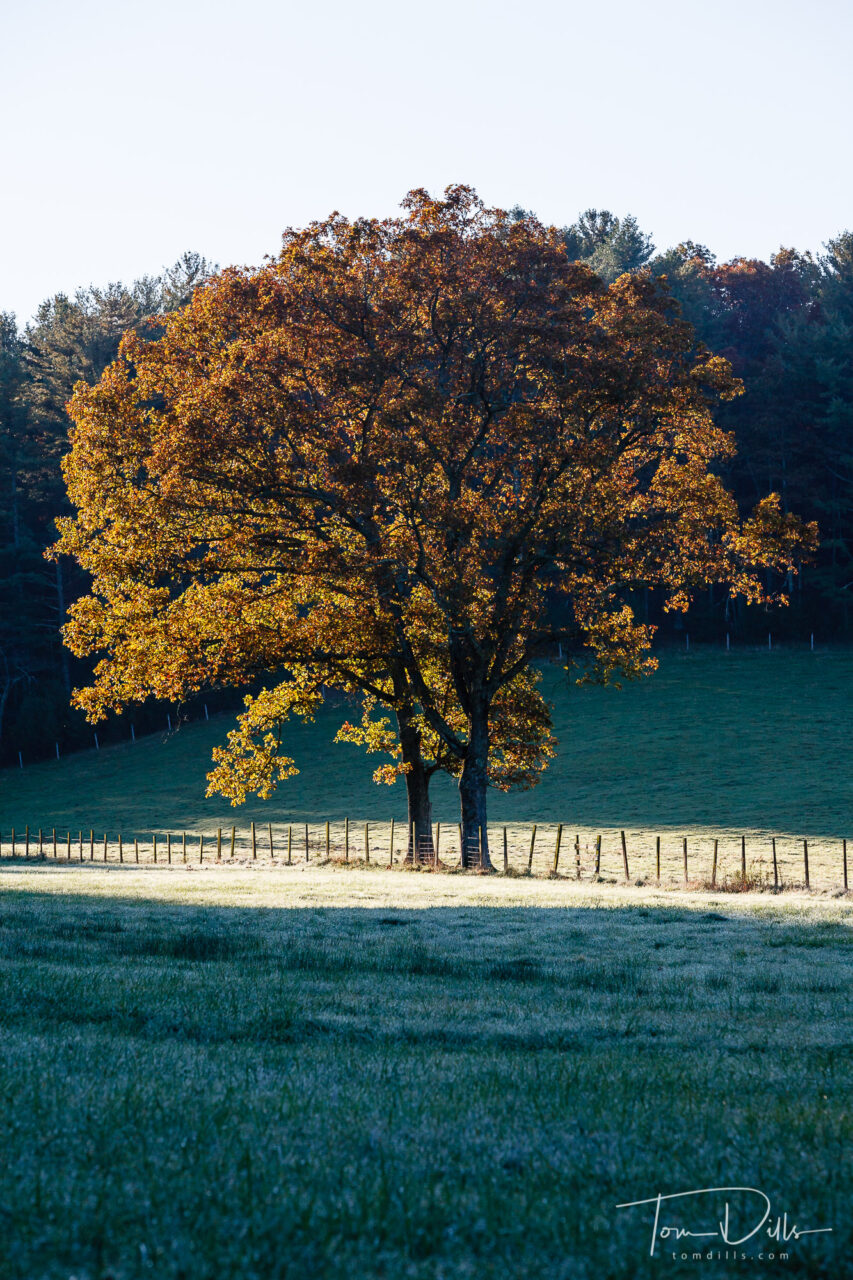
A little photo-geekery here. Apologies to the non-photographers. 😉
I took this photo back in the fall of 2011 along the Blue Ridge Parkway in southern Virginia. The tree was aglow in fall color and the light made it explode out of the surrounding hillside. I purposely under-exposed by 2 stops so I wouldn’t lose the sky or saturation in the golden leaves. But try as I might I just couldn’t get a final image that captured what I saw. Image #1 is the original file without processing, and Image #2 is my best attempt at that time.

When I was looking for photos to accompany my “trees” post I came across this image and decided to give it another try. I updated the Process Version to the latest one and took advantage of the latest masking and toning tools in Lightroom. I finally got the image I was looking for originally! Or at least very close to it. I may mess with it some more, but I’m happy to have broken the code on this one.

I just hope it doesn’t “force” me to start looking for old files to process…I have a hard enough time keeping up with the current stuff! 🙂

Like the new version much better. Not even the cameras can capture what the eye sees. Wish they would. The whole post processing is so time consuming 😐
Not everyone wants to spend their time processing photos, but it is one of the things I enjoy. Phones and cameras these days have great capabilities and do an excellent job of seeing what the eye sees.
Once upon a time, I saw a set of images displayed in Ansel Adams’ living room. All from the same negative, but printed at various stages of his lifetime to that point. Each was different – some in very subtle ways, others in much more dramatic fashion. The point he wanted to make in showing them to us was that we change as we go through life – why shouldn’t the art we make change along with us?
Yes! If I recall, Moonrise Hernandez and at least one of his Half Dome photographs are excellent examples of Adams’ working a negative until it approximated his vision.
I do find myself returning to favorites and re-working them. Most fun are ones that I originally worked in Photoshop where I can go back to the original RAW file and get a much better result – from both the technology and my own eye – than when I first processed it. Fun stuff! 🙂
The 2021 version really sings! It certainly transmits a strong feeling that is very different from the prior.
And that’s what I saw, it just took the right tools (or user skills) to get it to look like I saw it. Thanks, Howard!
Well done and thank you for going back in the archives to find the hidden gems.
Sometimes it is nice to revisit “old friends” and see what we come up with.